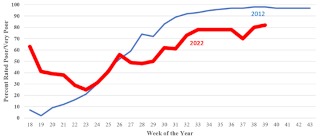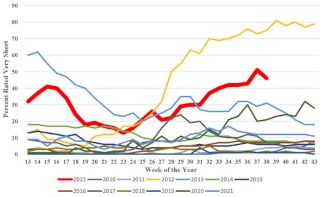It is abundantly clear the drought is developing into one of the top stories for Nebraska agriculture this year. It is impacting both crop and livestock producers, said Jay Rempe, Nebraska Farm Bureau’s senior economist. For crop producers overall, production will be down with the impacts becoming better understood as harvest continues.
“To assess drought impacts to crop producers, one needs to imagine what production would have been in the absence of drought,” said Rempe. “Making some assumptions regarding yields and prices in a world without drought, the value of this year’s corn crop could be $1.1 billion less compared to what might have been. And the value of the soybean crop could be $674 million less. Adding an estimated figure for the forgone value of wheat production—wheat production this year was 31% less than what might have been expected—the total loss in value to Nebraska’s corn, soybean and wheat producers could reach nearly $2 billion. But it’s likely to be worse because these estimates do not account for other crops like sorghum, sugar beets, sunflowers and dry beans.”
Those who raise cattle and other livestock have also felt the impacts of drought. Much of Nebraska’s pasture and rangeland is rated in poor or very poor condition. Alfalfa production is projected to be down 22% this year compared to last year. And other hay production is expected to be off 18% compared to 2021.
“Selling cows and marketing calves earlier can mean increased revenues this year, but the sales will impact the operations in the years to come. Fewer cows mean fewer calves. Fewer calves mean fewer cattle to sell next year and fewer available for feeding and ultimately for processing into meat. Thus, the impacts of this year’s drought on cow/calf producers and other cattle sectors could linger for years,” Rempe stresses.

Figure 2. Nebraska Pasture Conditions Rated Poor/Very Poor
Source: NEFB graphic based on USDA NASS data

Figure 3. Percent of Subsoil Moisture Supplies Rated Very Short, 2010-2022
Source: NEFB graphic based on USDA NASS data
Click here to see more...